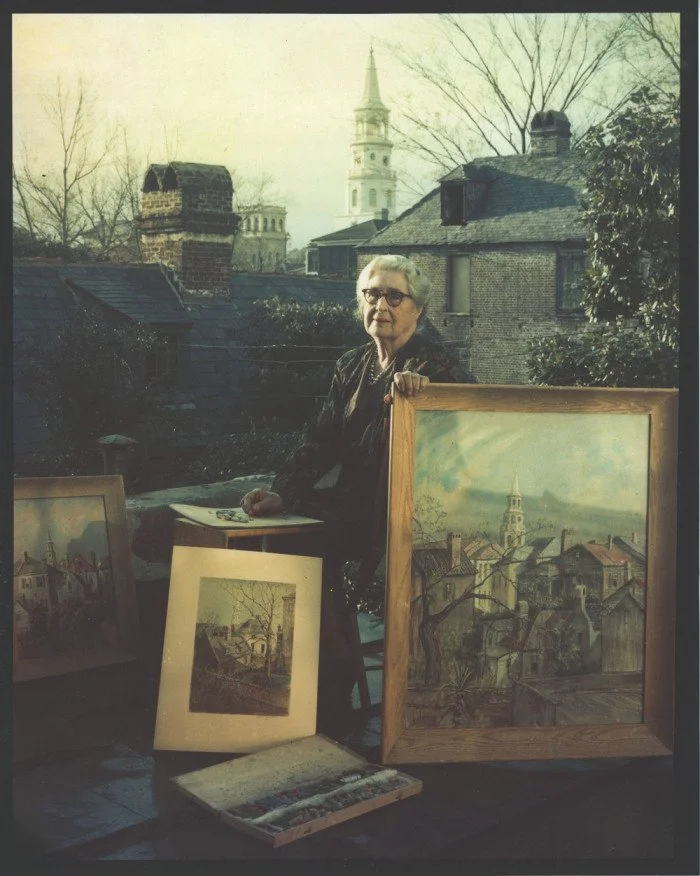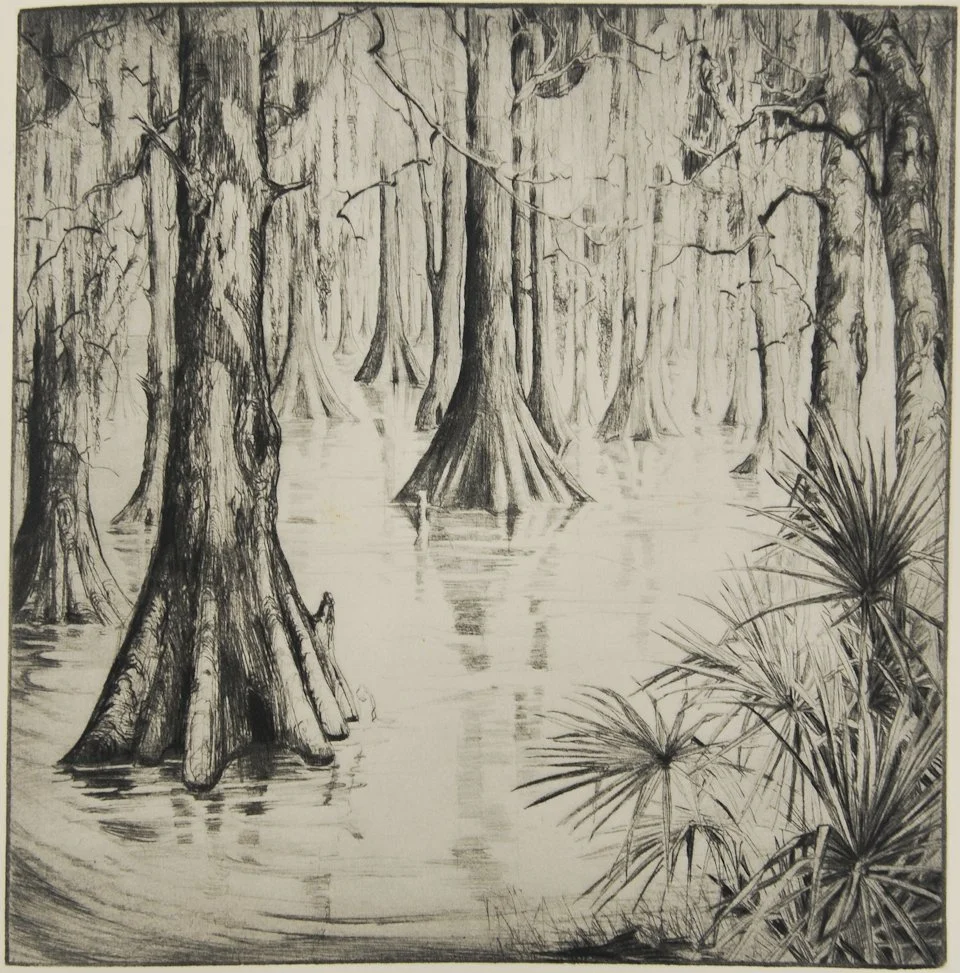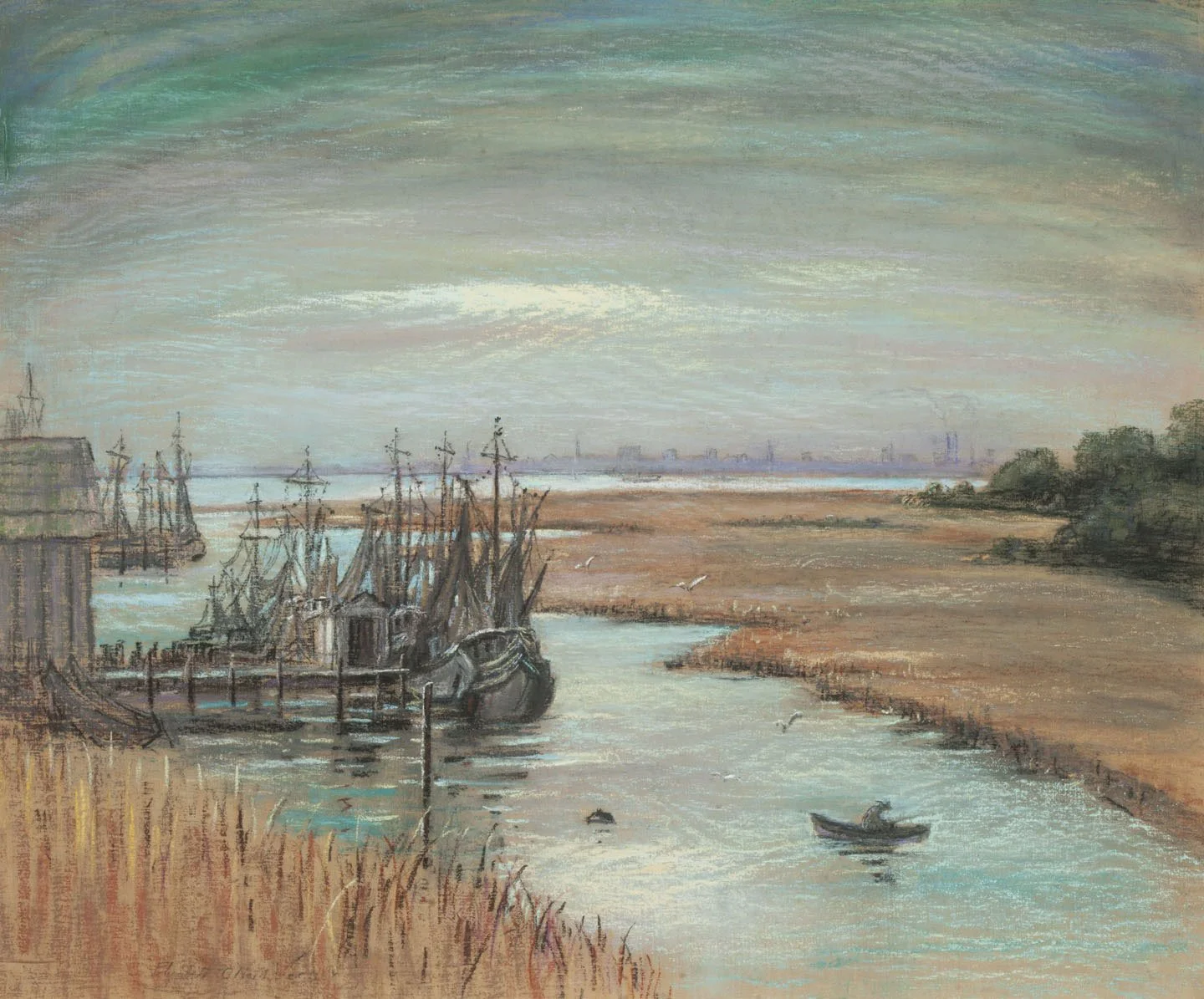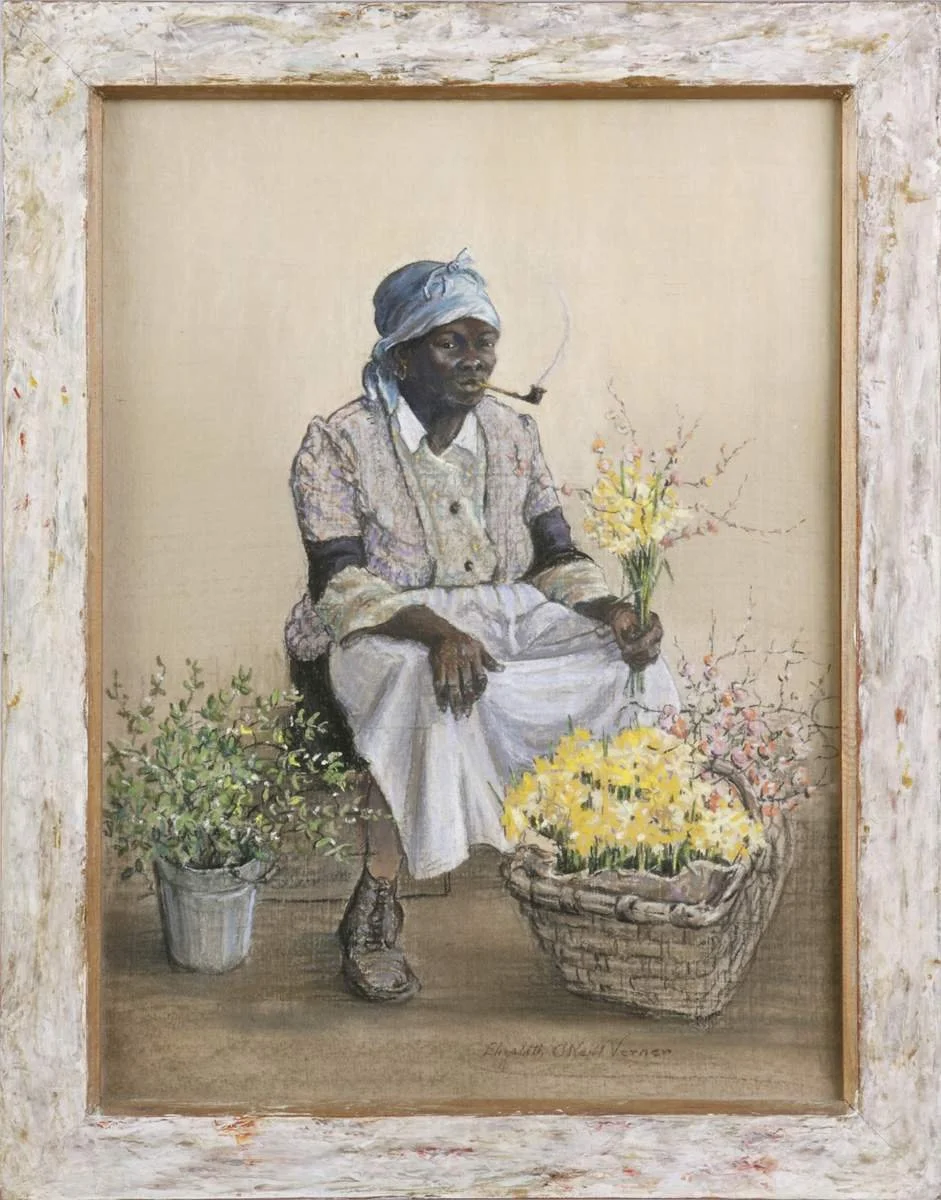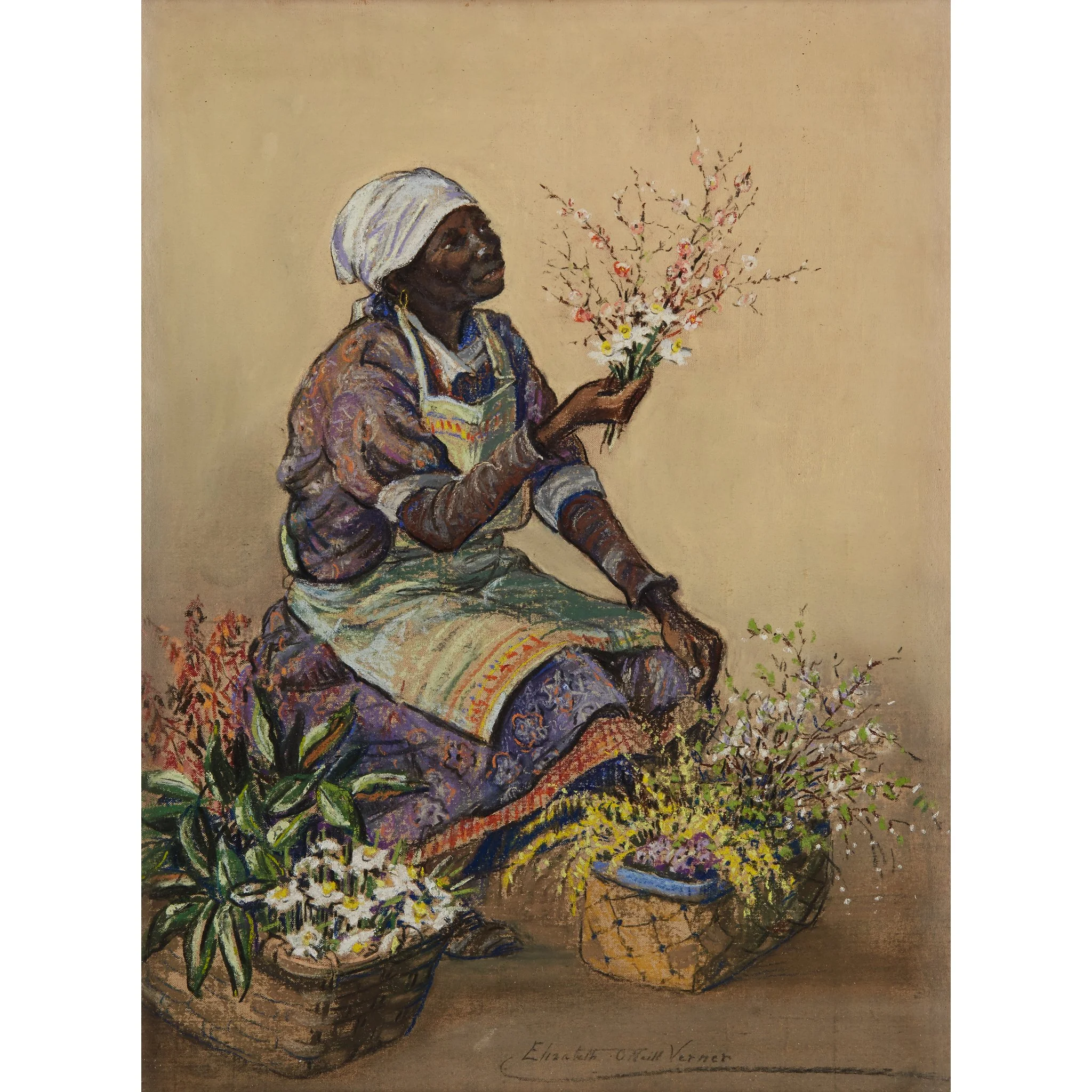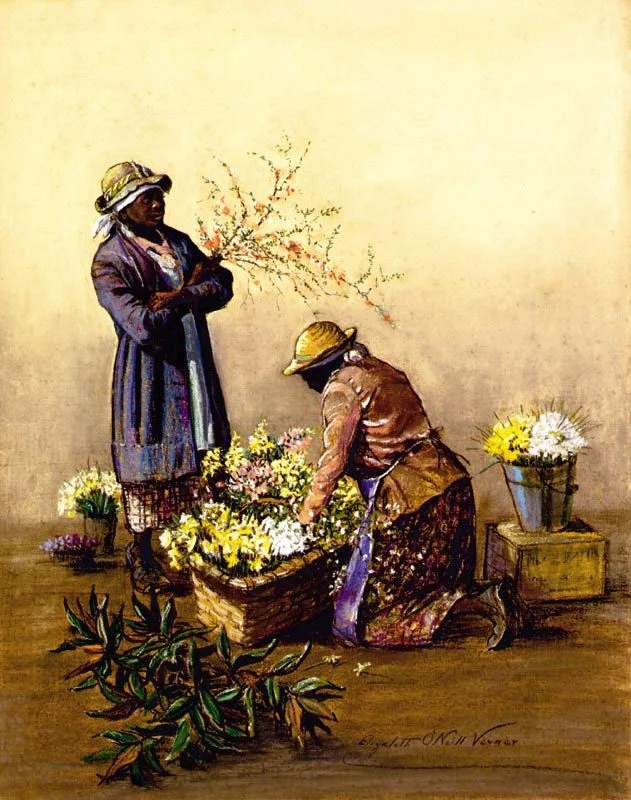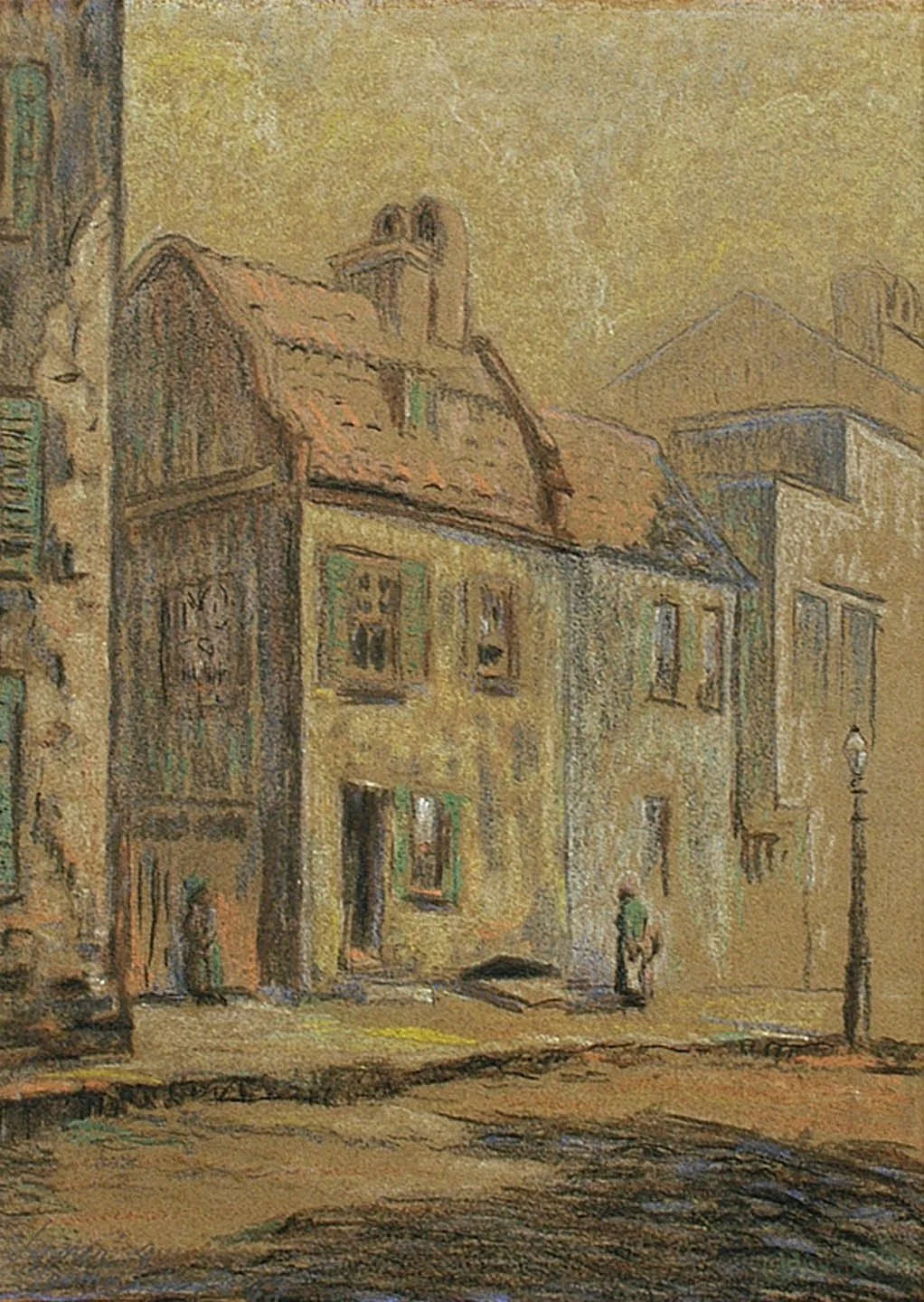Charleston Renaissance: Elizabeth O'Neill Verner
Elizabeth O’Neill Verner is considered one of the best-known women artists of 20th century South Carolina, and one of the leading artists of the Charleston Renaissance. Born in Charleston in 1883, her family was well-off and she enjoyed a comfortable childhood. She studied art with fellow Charleston artist Alice Ravenel Huger Smith, and later, her parents sent her to the Pennsylvania Academy of Art to hone her creative talents. There, she developed an aesthetic practice inspired by the founders of the American School of Painting.
In 1903, Elizabeth returned to South Carolina, teaching art at a school in Aiken before returning to Charleston. She married Pettigrew Verner, with whom she had two children, and continued to practice art in her spare time. She reconnected with Smith, and met visiting artists Gabrielle Clements and Ellen Day Hale, all of whom influenced her artistic endeavors. With the assistance of Clements and Hale, Verner and Smith helped found the Charleston Etcher’s Club, promoting a medium that both artists frequently used for their depictions of Charleston architecture.
When Verner’s husband died in 1925, she found herself the sole provider for her household and became a dedicated professional artist. She established a studio at 38 Tradd St and earned commissions for her etchings and drawings, especially of historic architecture, as part of the growing preservationist movement in the southeast. She also illustrated DuBose Heyward’s Porgy, and she published several books of her own work. In addition to her passion for drawing and etching, she developed great skill with pastels, a medium she began exploring in the 1930s which lent elements of both drawing and painting; it’s her work in pastel for which she may be best known.
One of her best-known series is that of portraits of African American women selling flowers on the streets of Charleston. The portraits are simple, straightforward, with a focus on the person - rarely is a background rendered, the women surrounded only by their flowers. Today, they spark conversation about the relationship between white artist Verner and the African American working women who posed for her. When paired with her writings about the flower women - which often reflected the disrespectful attitudes toward African Americans that were commonly openly expressed at the time - we can see how her works could have been viewed as both progressive - for featuring so prominently the faces and identities of marginalized women - and pandering to the prevailing attitudes of her patrons, which tended to romanticize the prosperous antebellum South.
Verner’s detailed and expansive body of work showcases her love for Charleston, and her contributions to the city’s artistic renaissance remain her greatest legacy. Today, her works can be found in museum collections throughout the United States. To look at her images of Charleston is to see the success of historic preservation, as we recognize so many familiar, loved places that look so much the same.
Interested in learning more about Elizabeth O’Neill Verner and other Charleston Renaissance artists? We recommend checking out the Corrigan Gallery here in Charleston!
We also recommend this article for a more in-depth analysis of Verner’s social status and attitudes toward Charleston’s flower sellers.
More South Carolina Artists:
Alfred Hutty | Alice Ravenel Huger Smith | Ned Jennings | William Halsey | Jasper Johns | Merton Simpson


